Paeonia suffruticosa
Mu dan
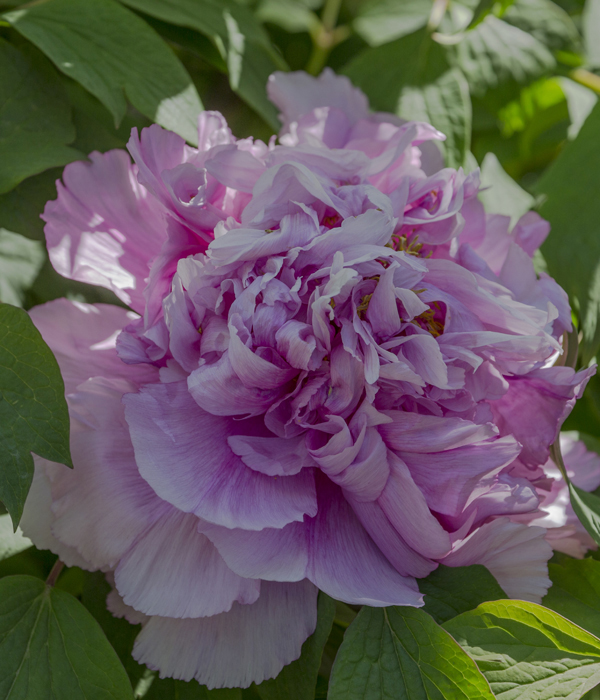
The first species to be described in the early 1800s, arriving in Europe thanks to Sir Banks in London in 1787, it was long considered the only tree species. It would seem to be the species from which most varieties derive. Recent reviews carried out by botanists have identified two subspecies, including the one cultivated with double or bomb flowers. The wild species, with single white or pink flowers, grows in the woodlands of Henan and of Anhui.
The paeonia suffruticosa group is very large, including over 200 varieties of hybrids and cultivars deriving from crossbreeding different species of the Vaginatae subsection.
Osti Peony
Feng dan
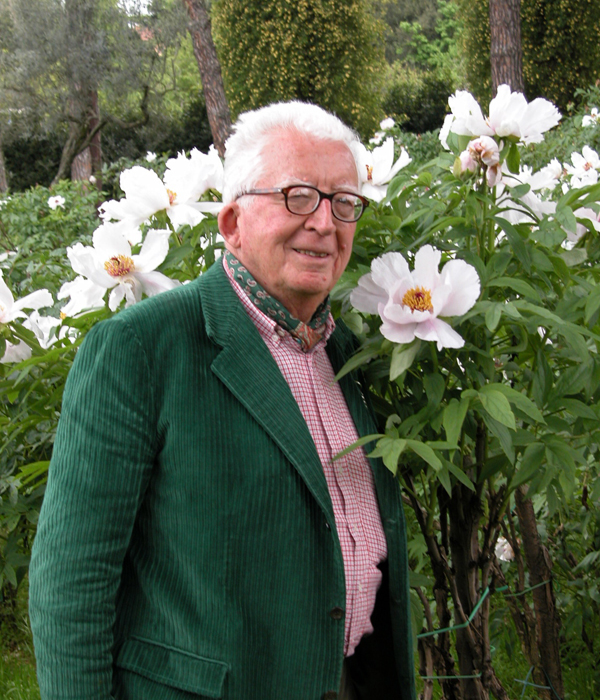
The Paeonia ostii, once included in the P. suffruticosa group, is the most vigorous and fast growing species of all the tree peonies. The Chinese name Feng dan was used to identify the variety of peonies cultivated for medicinal purposes for over two millennia, particularly in the provinces of Anhui, Henan, Hubei, Shaanxi and Sichuan. It grows wild in deciduous forests or thickets on mountain sides at altitudes of over 1,200 m. The single, large flowers, in pure white, are supported by upright and vigorous yet contained shrubs. The species has been dedicated to the Italian botanist Gianlupo Osti who took part in some expeditions to hunt for wild species in China.
Rocki Peony
Zi ban mu dan
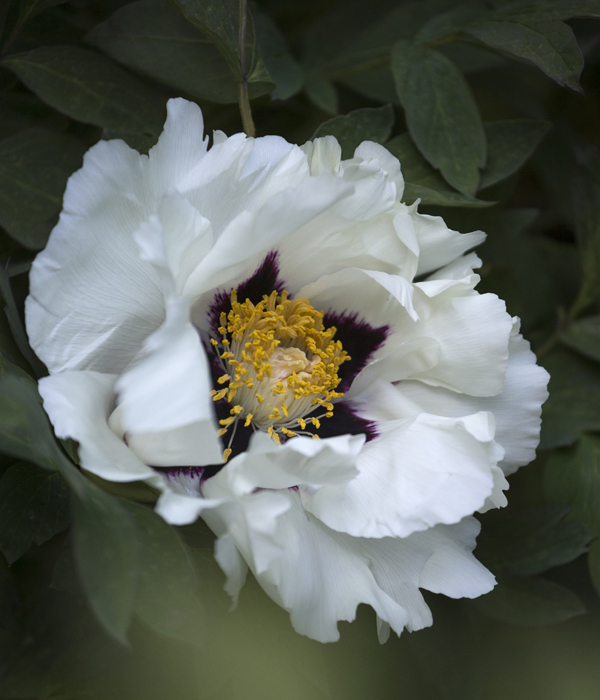
The Paeonia rockii, whose Chinese name Zi ban mu dan means “tree peony with flowers with purple spots at the base of the petals”, a characteristic which makes it easy to identify and prized. It was discovered in 1925-26 by the American Joseph Rock, a plant hunter, in the Tibetan Buddhist monastery of Choni, in Gansu. The seeds were shipped to the United States and later to Europe where the species was initially called “Rock's variety”. While characteristic of Gansu, a more inland province of China, north of Sichuan and next to Tibet, it is the most widespread species also in other provinces, such as Henan and Hubei. It has a very vigorous, wide shrub, 3m tall with milky white flowers that present a characteristic black stain at the base. It grows in broadleaf forests or at the wood’s edge at altitudes of between 1,300 and 2,000 m, in shadier and wetter habitats than other species. However, it can also be found in areas that are dry in summer and very cold in winter, particularly in Gansu. It has given rise to many cultivated varieties that differ from the others for their growth pattern, elegant, characteristic foliage, the stain on their petals and their late flowering; remarkably resistant to the cold.
Paeonia decomposita or szechuanica
Si chuan mu dan
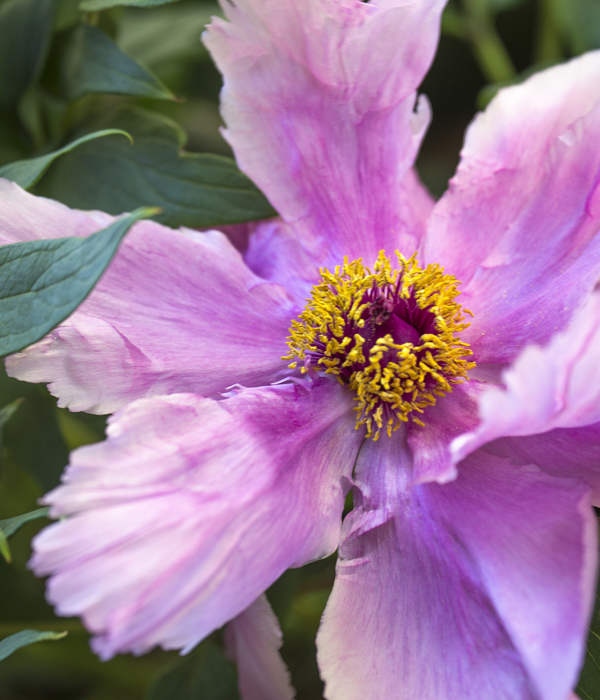
The Paeonia decomposita, Si chuan mu dan, is originally from the province of Sichuan, as the name suggests, and was once classified as P. szechuanica. It has a broad, vigorous shrub, up to 3 m tall, with single purplish-pink flowers. There are two subspecies with slightly different leaves, which live in different parts of Sichuan at high altitudes, between 1,700 and 3,100 m, in sparse forests or areas rich in shrubbery with chalky soil. Some varieties belonging to this species have flowers with a very large and heavy crown, to which it owes its distinctive drooping shape.
Paeonia quii, jishanensis
Luan ye mu dan - Ai mu dan
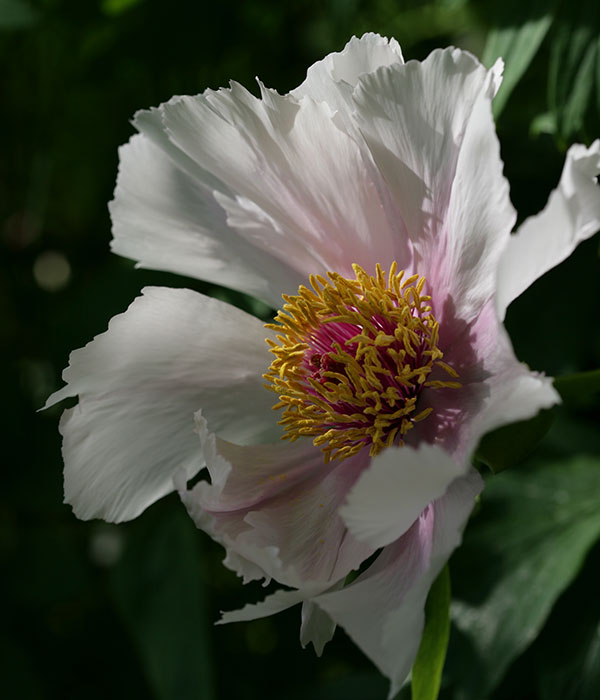
The Chinese name for the Paeonia quii, Luan ye mu dan, means “tree peony with ovate leaflets” and it is very similar to the Paeonia jishanensis apart from some features of its leaves; it has single flowers in light pink. It grows in Hubei and Henan in broadleaf forests or on grassy sunny slopes and on limestone rocks. It one of the wild species most at risk of extinction.
The Chinese name for the Paeonia jishanensis, Ai mu dan, means “dwarf tree peony”, given its smaller size compared to other species. It grows in many provinces of inland China, at altitudes between 900 and 1,700 m, in large broadleaf forests or thick scrub. It has pure white flowers, only rarely shaded with pink on the edges.
Paeonia delavay
Dian mu dan
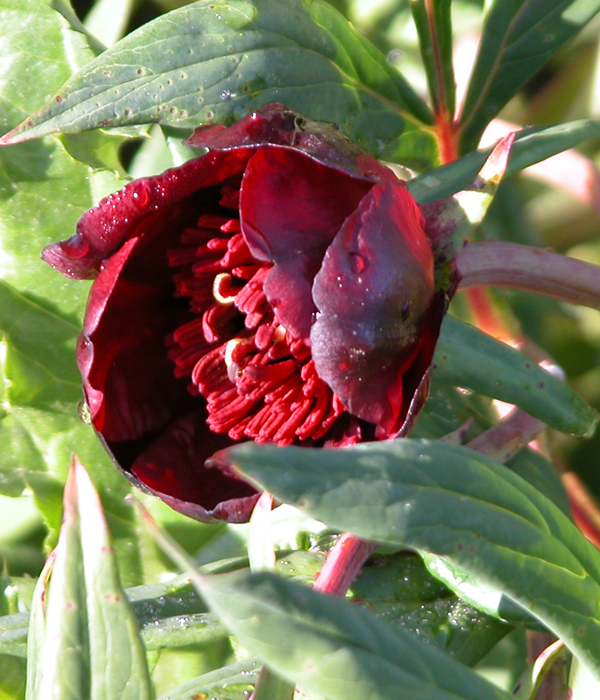
The Chinese name for the species Paeonia delavayi, Dian mu dan, means “tree peony from Yunnan” in south east China. It belongs to the subsection of the Delavayanae, differing from the Vaginatae for its small flowers in colours ranging from yellow to dark red, right down to brown. Even the shrubs have highly characteristic leaves and a distinctive growth pattern. This species also includes those with yellow flowers and orange filaments and with streaked flowers once called P. potanini. It takes its name from the missionary explorer and botanist Père Jean Marie Delavay who discovered it in the regions near Tibet in the 19th century. It grows at altitudes of between 2,000 and 3,600 m in grassy slopes or sparse and virgin pine forests, in rather dry environments. It often produces shoots which means it can be propagated vegetatively.
Paeonia ludlowi
Da hua huang mu dan
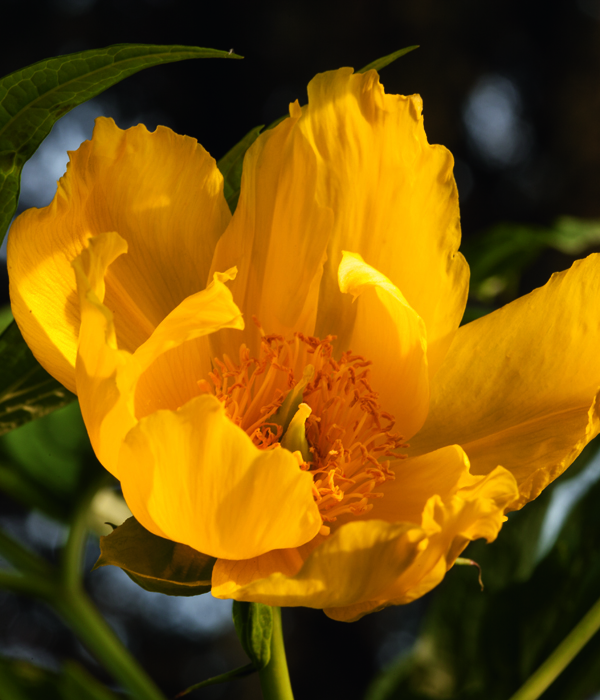
The Chinese name for the species Paeonia ludlowii, Da hua huang mu dan, means “big yellow-flowered tree peony”, while the botanical name comes from the English botanist Ludlow who together with Sheriff discovered it in Tibet in 1936. It grows wild in a small area of southern Tibet at altitudes of between 2,900 and 3,500 m, in sparse forests, in woods full of thickets or on granite ridges. It differs from the P. delavayi species for its larger size, reaching even more than 3 m in height, with bigger, pure yellow flowers, and shrubs producing few shoots. It is at risk of extinction.
Herbaceous peonies
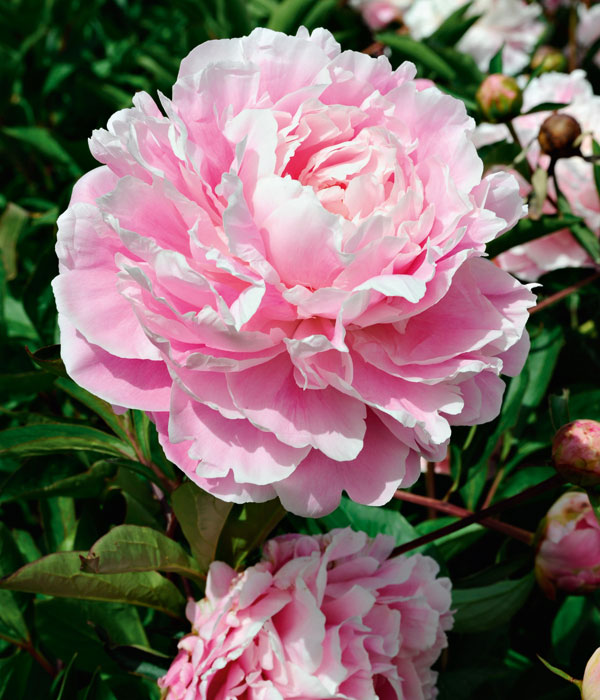
The Centro Botanico Moutan collection includes thousands of herbaceous peonies from the lactiflora species whose flowering time makes for a unique spectacle: a blanket of flowers in a thousand shades of pink stretching out for over one hectare.